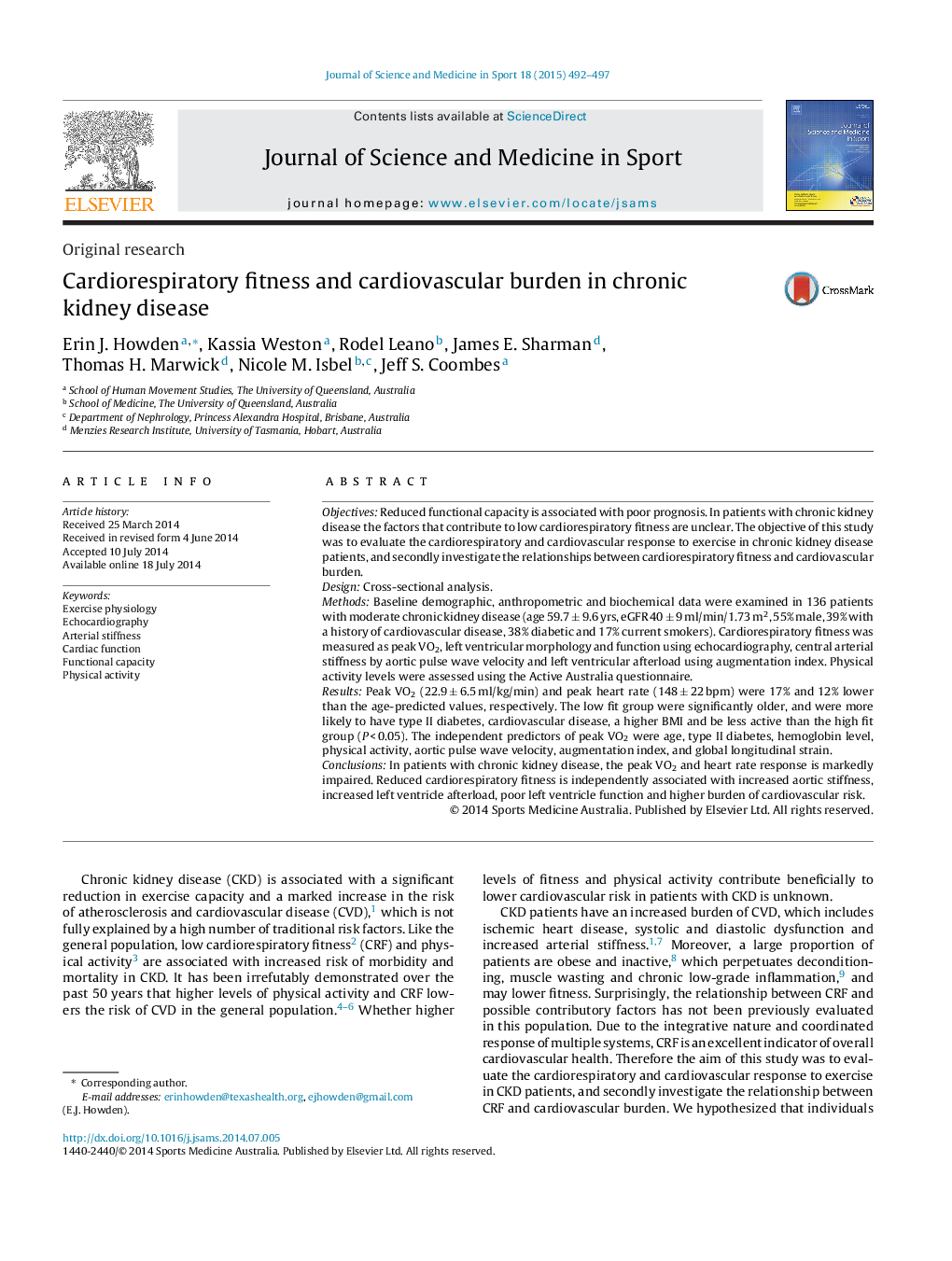| کد مقاله | کد نشریه | سال انتشار | مقاله انگلیسی | نسخه تمام متن |
|---|---|---|---|---|
| 2704250 | 1144675 | 2015 | 6 صفحه PDF | دانلود رایگان |
ObjectivesReduced functional capacity is associated with poor prognosis. In patients with chronic kidney disease the factors that contribute to low cardiorespiratory fitness are unclear. The objective of this study was to evaluate the cardiorespiratory and cardiovascular response to exercise in chronic kidney disease patients, and secondly investigate the relationships between cardiorespiratory fitness and cardiovascular burden.DesignCross-sectional analysis.MethodsBaseline demographic, anthropometric and biochemical data were examined in 136 patients with moderate chronic kidney disease (age 59.7 ± 9.6 yrs, eGFR 40 ± 9 ml/min/1.73 m2, 55% male, 39% with a history of cardiovascular disease, 38% diabetic and 17% current smokers). Cardiorespiratory fitness was measured as peak VO2, left ventricular morphology and function using echocardiography, central arterial stiffness by aortic pulse wave velocity and left ventricular afterload using augmentation index. Physical activity levels were assessed using the Active Australia questionnaire.ResultsPeak VO2 (22.9 ± 6.5 ml/kg/min) and peak heart rate (148 ± 22 bpm) were 17% and 12% lower than the age-predicted values, respectively. The low fit group were significantly older, and were more likely to have type II diabetes, cardiovascular disease, a higher BMI and be less active than the high fit group (P < 0.05). The independent predictors of peak VO2 were age, type II diabetes, hemoglobin level, physical activity, aortic pulse wave velocity, augmentation index, and global longitudinal strain.ConclusionsIn patients with chronic kidney disease, the peak VO2 and heart rate response is markedly impaired. Reduced cardiorespiratory fitness is independently associated with increased aortic stiffness, increased left ventricle afterload, poor left ventricle function and higher burden of cardiovascular risk.
Journal: Journal of Science and Medicine in Sport - Volume 18, Issue 4, July 2015, Pages 492–497
